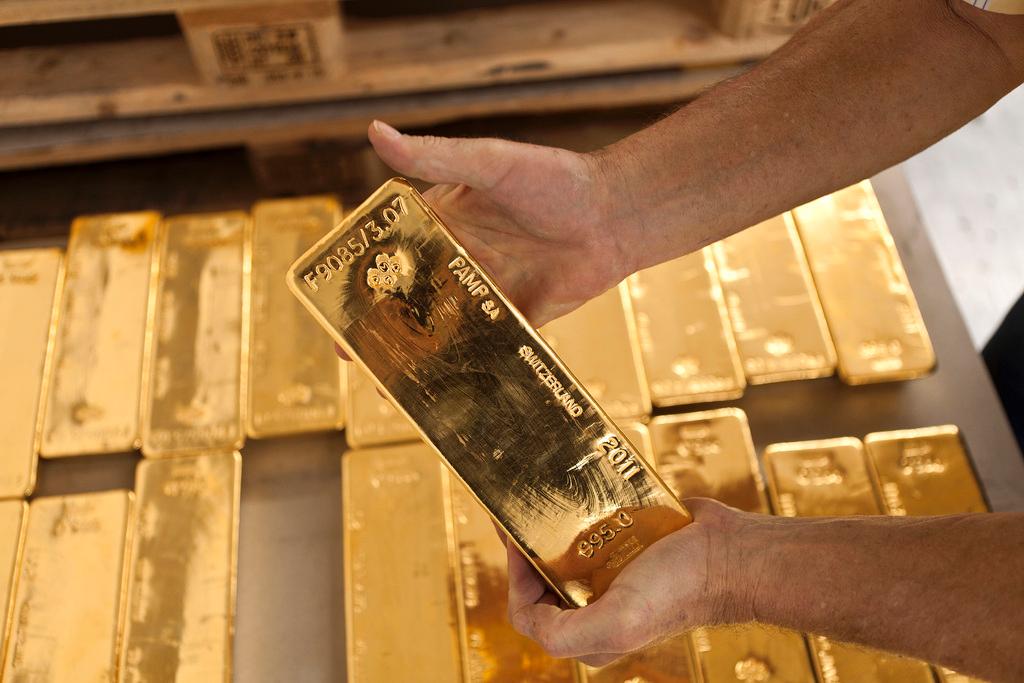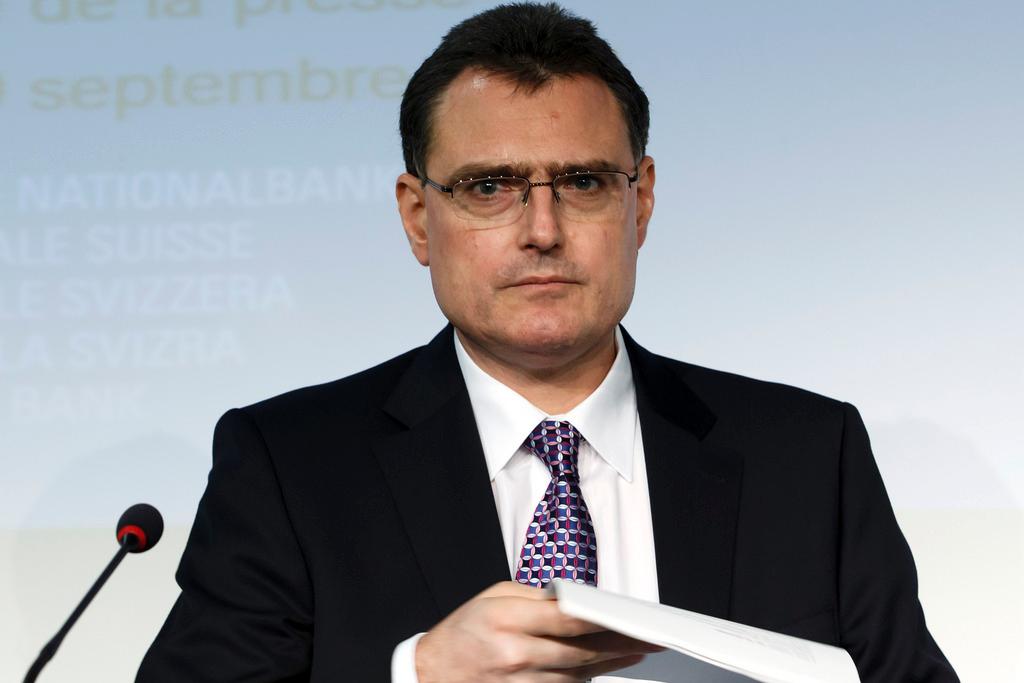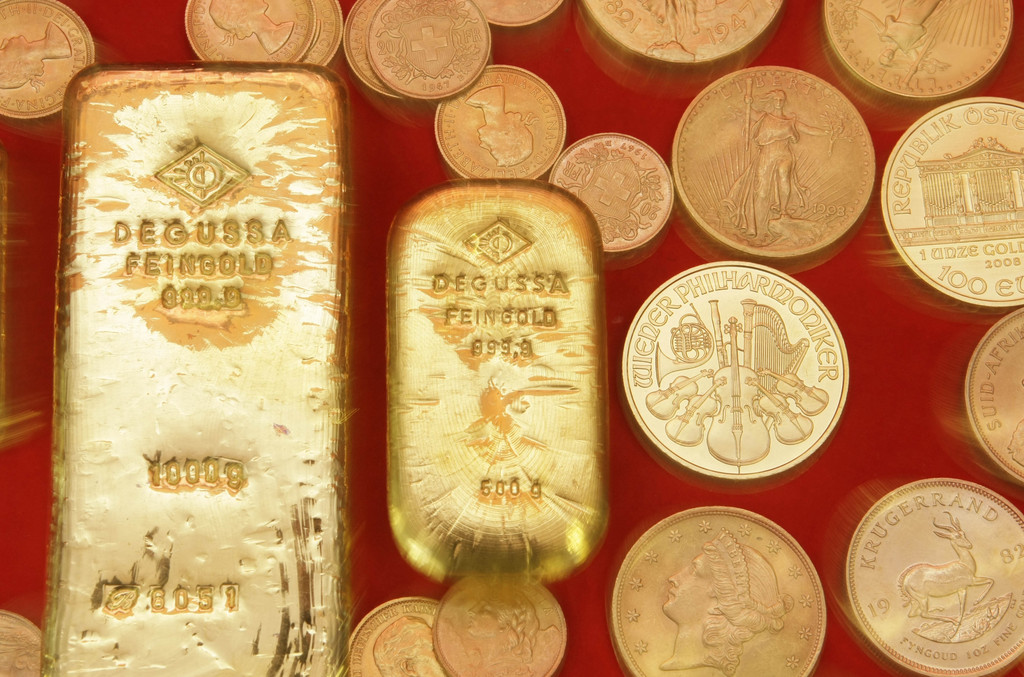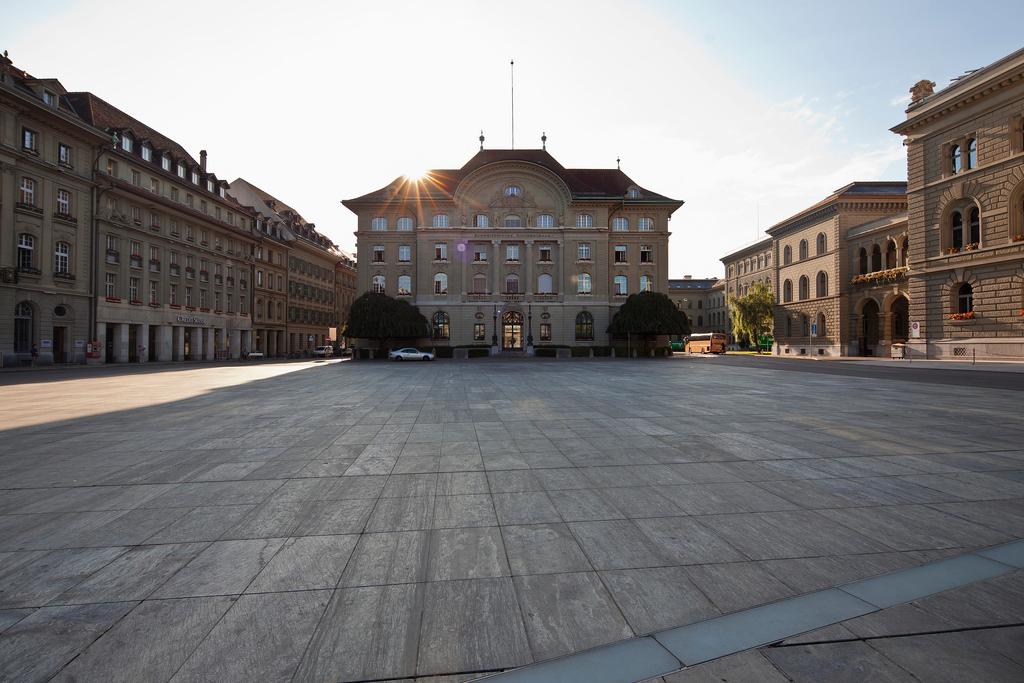Swiss love affair with gold could heat up again

Switzerland has the biggest reserves of gold per capita in the world. Yet an initiative calling for a tripling of the central bank’s gold reserves will shortly be put to a vote. Does the shiny stuff hold a particular fascination for the Swiss?
With 1,040 tonnes of gold, the Swiss National Bank (SNB) has the seventh largest gold reserves in the world. Every Swiss thus owns 128 grams of the precious metal, without taking account any gold bars, jewellery or other personal items made of gold they might have stashed away. This value far exceeds that for all other countries: Germans have 42 grams per capita, Italians 40, French 38 and Americans 26.
The volume of this mountain of gold could triple in the next couple of years, if the people accept the initiative to “Save Switzerland’s gold” launched by conservative right-wing politicians. The text demands that within five years the SNB must acquire reserves of gold equal to at least 20% of its total assets. Given current figures, the national gold holdings would have to rise to 2,500 to 3,000 tonnes and would be bigger than those of any country except the US and Germany.
Centre for trade in gold
It is not the first time that the Swiss people have had to vote on the gold reserves of the SNB. Gold has already featured in several domestic political controversies, and has also caused friction with other countries. So one might ask: do the Swiss have a particular fascination for gold? And how did they come to accumulate such large gold reserves in the first place?
“I think there are two main reasons,” says Tobias Straumann, who teaches economic history at the University of Zurich. “In the past 150 years, Switzerland has enjoyed considerable economic stability. The government has often had surpluses, which were used to buy gold. Then too, Switzerland was spared wars and major crises. In the inter-war period, which featured economic depression and galloping inflation, other countries also bought a lot of gold. But then, as happened with Holland and Belgium, those reserves were looted by the Nazis.”

More
Tighter grip needed on Switzerland’s gold?
During the Second World War, Switzerland became the centre of the gold trade in Europe. Being neutral, the country was able to acquire the precious metal to the tune of CHF1.8 billion ($1.85 billion) from the Allies and CHF 1.3 billion from the Axis powers (Germany, Italy and Japan). Two thirds of this gold ended up in the strongrooms of the SNB. Heavily criticised by the victorious Allies over these transactions, Switzerland had to pay out CHF250 million in gold to the US, Britain and France in 1946.
Reserves an anachronism?
In the post-war years, Switzerland did not need to touch its gold to fund reconstruction, as was the case in many other countries. Economic stability and financial muscle allowed the SNB to reinforce its gold reserves, which increased from 1,194 tonnes in 1945 to 2,703 in 1965. These substantial reserves, the fifth largest in the world, symbolised Switzerland’s aspirations to security and independence in a world of opposing blocs during the Cold War, and also served to ensure international trust in its financial industry, which was expanding rapidly.
In the 1970s, following an agreement reached under the aegis of the International Monetary Fund, most countries gave up parity between gold and their national currencies. Gold lost its historic importance in the international monetary system. Yet Switzerland continued to rely on gold for a long time: the linking of the franc to gold was only abandoned in 1999 as part of a general revision of the federal constitution. For the first time, the SNB was free to sell off part of its gold reserves, which had been considered inalienable up to that point.
“In Switzerland at the time there was strong political pressure from all sides to sell off part of the gold assets of SNB,” Straumann recalls. “These huge reserves now seemed an anachronism: there was no great fear of inflation, and the price of gold, which does not bear interest, had been dropping for twenty years. Many people got the impression that they had accumulated a great treasure that was of no use.”
Squabble over proceeds
In 1999, the government and parliament decided to sell off more than half of the SNB’s gold reserves, now considered useless for the purposes of national monetary policy. Between 2000-2005 and 2007-2008, the central bank sold 1,550 tonnes of its gold. The first tranche, consisting of 1,300 tonnes, came on the market just when the price of gold was at one of its lowest ebbs in decades.
“These sales were definitely a mistake because gold may be the only commodity which throughout the course of history has always been able to compensate at least for inflation,” says economist Peter Bernholz, a specialist in monetary history. “But at that time, everyone wanted to profit from this windfall. Among the parties there was a great battle about how to use the proceeds of the gold sales.”
In 2002, the Swiss people rejected the idea of handing over all the proceeds of the sales to the national old age pension fund, as well as the option of giving part of it to a “solidarity foundation” proposed by the government to soften US criticism of Switzerland’s behaviour during the Second World War. In the end, CHF21 billion ended up in the coffers of the federal government and the cantons, and 6.7 billion were used by the SNB to bolster its monetary reserves. So the central bank was left with 1,040 tonnes of gold.
International interest
Between 2008 and 2012, in the wake of the international financial crisis and growing demand from emerging economies, the price of gold bounced back to new historic highs. This price inflation has prompted renewed grumbling about the sales of gold by the SNB. In 2012, convinced that the precious metal is the best safety net to cope with crisis situations and ensure the monetary independence of Switzerland, some representatives of the conservative right launched the initiative “Save Switzerland’s Gold” which calls for a topping up of national reserves of the precious metal.
So far, the initiative has won only limited support around the country. For opponents it is a hopelessly outdated proposal, championed by people nostalgic for a bygone era. They point out that for quite some time now, gold no longer has importance in the monetary policy of central banks.
The upcoming vote is being followed with some interest abroad too: the price of gold, down since 2012, might rise sharply if the SNB was obliged to buy 1,500 to 2,000 tonnes in the next few years. The annual global production of gold amounts to around 2,500-3,000 tonnes, and collectively central banks generally purchase less than 500 tonnes.
Gold used to have a great importance in the international monetary system. Up until the 19th century, payment was made mostly in gold and silver coins. With the introduction of paper banknotes and coins not made of precious metals, central banks still had to be able to convert their national currencies to gold and keep large reserves to guarantee the value of those currencies.
In 1978, as part of an agreement between member countries of the International Monetary Fund, there was a demonetarisation of gold, meaning the end of the link between national currencies and the precious metal. The pricing of gold was liberalised and regulated only by the law of supply and demand. Today, central banks hold a total of 30,000 tonnes of gold, or less than a fifth of the gold available worldwide. Annual production of gold is about 2,500-3,000 tonnes.
Started by three Swiss People’s Party politicians – parliamentarians Luzi Stamm and Lukas Reimann, and former parliamentarian Ulrich Schlüer – the initiative to “save Switzerland’s gold” was handed in to the Federal Chancellery in 2013. If the proposal is accepted, the gold reserves of the SNB will no longer be able to be sold. Within five years, the SNB is to hold an amount of gold equal to at least 20% of its assets. This gold is to be kept entirely in Switzerland. Currently the entire reserves of the SNB come to about CHF500 billion. To meet the terms of the initiative, the central bank would therefore have to hold gold in the amount of at least CHF100 billion. Given its current gold reserves, it would have to buy CHF65 billion worth of ingots.
The government and most of the parties are calling for the initiative to be rejected, saying that it would threaten the independence and flexibility of the SNB. They say that if it were required to hold huge reserves of gold it couldn’t sell, the central bank would no longer have a sufficient margin of manoeuvre to deal with situations like a steep rise in the value of the franc against the euro or the dollar.
(Translated from Italian by Terence MacNamee)

In compliance with the JTI standards
More: SWI swissinfo.ch certified by the Journalism Trust Initiative












You can find an overview of ongoing debates with our journalists here . Please join us!
If you want to start a conversation about a topic raised in this article or want to report factual errors, email us at english@swissinfo.ch.